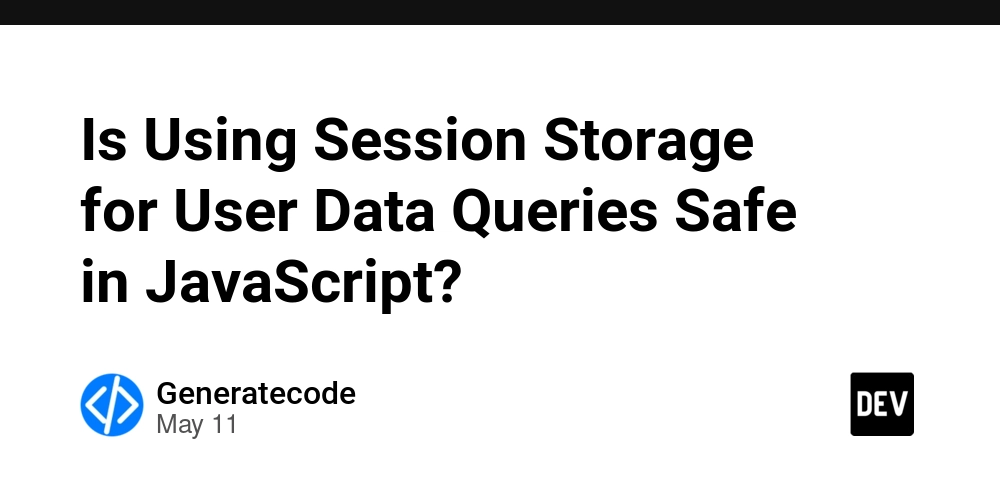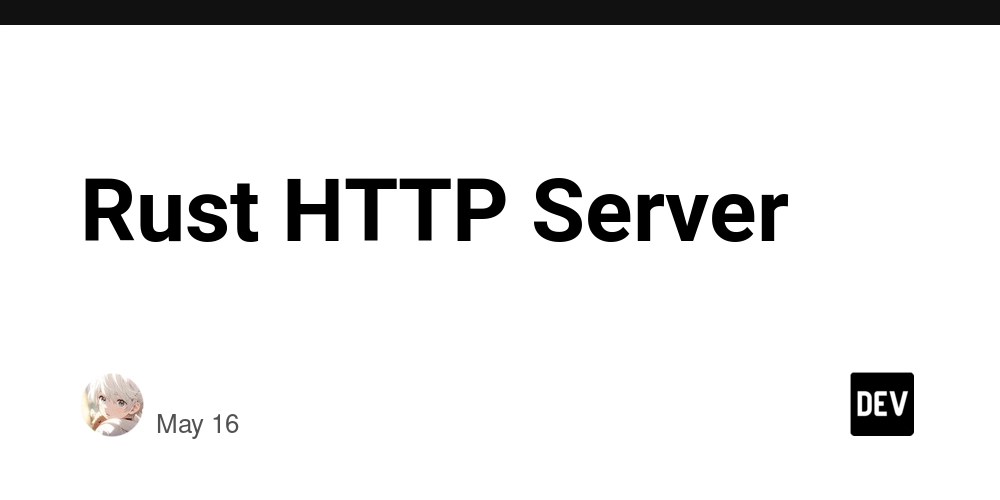Is Using Session Storage for User Data Queries Safe in JavaScript?
Introduction: Understanding Session Storage Safety in JavaScript Session storage is a useful feature in JavaScript that allows developers to store data in a web browser for the duration of a page session. The question at hand is whether utilizing session storage to query user data from a database is a secure practice. The concern primarily revolves around the potential vulnerabilities that could arise when sensitive data is stored in session storage. The benefit of using session storage is that it enables you to avoid repetitive database queries, thus optimizing the performance of your application. By caching the data in session storage after the initial retrieval, you can easily access user data without needing to make additional requests to the server, provided the session remains active. Why Session Storage Might Be Considered Risky While session storage can be convenient, several security issues need careful consideration: 1. Potential JavaScript Injection One of the critical issues involves JavaScript injection. If your application allows user input without proper validation or sanitization, malicious users could potentially exploit these vulnerabilities to execute arbitrary JavaScript in the context of your page. This risk becomes even more significant when users can access sensitive data stored in session storage. 2. Cross-Site Scripting (XSS) Session storage could be an attractive target for attacks such as XSS. If an attacker manages to inject JavaScript into the page, they could read from or write to session storage. Hence, protecting your application against XSS is crucial. Proper Content Security Policy (CSP), input sanitization, and escaping output can help mitigate these risks. Utilizing Session Storage Effectively If you have identified that storing user data in session storage is necessary, follow these best practices: Step 1: Store Data in Session Storage You can store user-specific information retrieved from your database in session storage as follows: // Retrieve user data from an API or database fetch('https://api.example.com/user-data') .then(response => response.json()) .then(data => { // Store in session storage sessionStorage.setItem('userData', JSON.stringify(data)); }) .catch(error => console.error('Error retrieving user data:', error)); Step 2: Retrieve Data from Session Storage Data can be retrieved from session storage easily using the getItem method: // Retrieve user data from session storage const userData = JSON.parse(sessionStorage.getItem('userData')); if (userData) { console.log('User data retrieved:', userData); } else { console.log('No user data found in session storage.'); } Step 3: Ensure Secure Access Control You also need to ensure secure access control mechanisms are in place. Even if the user data is stored for one user session, make sure that: Users can only access their own data. Implement proper authentication and authorization processes in your application so only authorized users retrieve the relevant data. Frequently Asked Questions Can session storage data be accessed by other scripts? No, session storage is specific to the origin (protocol, host, and port) and thus is not accessible by scripts from different domains. However, if your site has XSS vulnerabilities, other scripts may exploit it. Is session storage erased after the browser is closed? Yes, session storage persists only until the tab or window is closed. Once closed, all data stored in session storage is cleared. How to prevent session storage tampering? To minimize tampering risks, always validate and sanitize user input. Avoid directly rendering user input on the page and utilize frameworks that automatically manage such protections. Conclusion In conclusion, while using session storage for querying and caching user data can enhance the performance of your JavaScript application, it is vital to consider the potential security implications thoroughly. Ensuring the security of user data, implementing strict access controls, and maintaining healthy coding practices will significantly reduce the risks of JavaScript injection and XSS vulnerabilities. By following these best practices, you can create a more secure environment for your users while leveraging the advantages of session storage.

Introduction: Understanding Session Storage Safety in JavaScript
Session storage is a useful feature in JavaScript that allows developers to store data in a web browser for the duration of a page session. The question at hand is whether utilizing session storage to query user data from a database is a secure practice. The concern primarily revolves around the potential vulnerabilities that could arise when sensitive data is stored in session storage.
The benefit of using session storage is that it enables you to avoid repetitive database queries, thus optimizing the performance of your application. By caching the data in session storage after the initial retrieval, you can easily access user data without needing to make additional requests to the server, provided the session remains active.
Why Session Storage Might Be Considered Risky
While session storage can be convenient, several security issues need careful consideration:
1. Potential JavaScript Injection
One of the critical issues involves JavaScript injection. If your application allows user input without proper validation or sanitization, malicious users could potentially exploit these vulnerabilities to execute arbitrary JavaScript in the context of your page. This risk becomes even more significant when users can access sensitive data stored in session storage.
2. Cross-Site Scripting (XSS)
Session storage could be an attractive target for attacks such as XSS. If an attacker manages to inject JavaScript into the page, they could read from or write to session storage. Hence, protecting your application against XSS is crucial. Proper Content Security Policy (CSP), input sanitization, and escaping output can help mitigate these risks.
Utilizing Session Storage Effectively
If you have identified that storing user data in session storage is necessary, follow these best practices:
Step 1: Store Data in Session Storage
You can store user-specific information retrieved from your database in session storage as follows:
// Retrieve user data from an API or database
fetch('https://api.example.com/user-data')
.then(response => response.json())
.then(data => {
// Store in session storage
sessionStorage.setItem('userData', JSON.stringify(data));
})
.catch(error => console.error('Error retrieving user data:', error));
Step 2: Retrieve Data from Session Storage
Data can be retrieved from session storage easily using the getItem method:
// Retrieve user data from session storage
const userData = JSON.parse(sessionStorage.getItem('userData'));
if (userData) {
console.log('User data retrieved:', userData);
} else {
console.log('No user data found in session storage.');
}
Step 3: Ensure Secure Access Control
You also need to ensure secure access control mechanisms are in place. Even if the user data is stored for one user session, make sure that:
- Users can only access their own data.
- Implement proper authentication and authorization processes in your application so only authorized users retrieve the relevant data.
Frequently Asked Questions
Can session storage data be accessed by other scripts?
No, session storage is specific to the origin (protocol, host, and port) and thus is not accessible by scripts from different domains. However, if your site has XSS vulnerabilities, other scripts may exploit it.
Is session storage erased after the browser is closed?
Yes, session storage persists only until the tab or window is closed. Once closed, all data stored in session storage is cleared.
How to prevent session storage tampering?
To minimize tampering risks, always validate and sanitize user input. Avoid directly rendering user input on the page and utilize frameworks that automatically manage such protections.
Conclusion
In conclusion, while using session storage for querying and caching user data can enhance the performance of your JavaScript application, it is vital to consider the potential security implications thoroughly. Ensuring the security of user data, implementing strict access controls, and maintaining healthy coding practices will significantly reduce the risks of JavaScript injection and XSS vulnerabilities. By following these best practices, you can create a more secure environment for your users while leveraging the advantages of session storage.










































































































































































![[The AI Show Episode 156]: AI Answers - Data Privacy, AI Roadmaps, Regulated Industries, Selling AI to the C-Suite & Change Management](https://www.marketingaiinstitute.com/hubfs/ep%20156%20cover.png)
![[The AI Show Episode 155]: The New Jobs AI Will Create, Amazon CEO: AI Will Cut Jobs, Your Brain on ChatGPT, Possible OpenAI-Microsoft Breakup & Veo 3 IP Issues](https://www.marketingaiinstitute.com/hubfs/ep%20155%20cover.png)






































































































































































































































































_incamerastock_Alamy.jpg?width=1280&auto=webp&quality=80&disable=upscale#)
_Brain_light_Alamy.jpg?width=1280&auto=webp&quality=80&disable=upscale#)






























































































![Senators reintroduce App Store bill to rein in ‘gatekeeper power in the app economy’ [U]](https://i0.wp.com/9to5mac.com/wp-content/uploads/sites/6/2025/06/app-store-senate.jpg?resize=1200%2C628&quality=82&strip=all&ssl=1)























































































